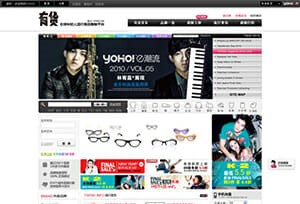How to Localize for the Chinese Marketplace
By the Scriptis team
Many businesses are anxious to take advantage of the Chinese market with its population of 1.4 billion, its exploding middle class, and its growing number of extremely affluent upper-class consumers. But jumping into the Chinese market without adequate preparation and brand localization can be a recipe for disaster. There are a number of factors to consider before you venture into the Chinese marketplace.
Cultural differences are significant
Even very large multinational companies have lost big in the Chinese market because they assumed they could simply translate their existing marketing campaigns and transfer their Western business models to China. Home Depot lost a huge investment in China by marketing its “do it yourself” products to a culture where labor is cheap and “doing it yourself” is only for those without enough money to hire others to do it.
McDonald’s opened drive-thru restaurants in China in the last decade in an attempt to compete more successfully with KFC. The problem is that the Chinese had no experience with the concept of a drive-thru and often would purchase their food at the drive-thru, take the food inside, and eat it there. This went on for years and McDonald’s had to undertake a huge training and marketing campaign to teach both their employees and their customers how to use a drive-thru.

One of the reasons McDonald’s was racing to catch up with KFC was because KFC did such a good job of localizing for China, considering cultural preferences and values in exporting its brand. KFC’s restaurants and menus in China look very different from what we are used to. Their restaurants are larger and have hostesses to greet customers. The menus are more extensive and include items developed specifically for the many regional variations in Chinese cuisine. In other words, KFC customized its Chinese operations to meet Chinese consumers’ expectations, tastes, and preferences.
Marketing materials need more than translation
Anything that communicates your brand—packaging, building design, websites, ad campaigns, and marketing collateral—needs more than simple translation. Content needs to be adapted for each particular market. Here are some tips to guide your localization campaign:
- Establish standard transliterations for your brand names and use them consistently. Since Chinese characters have meanings as well as sounds, you will want help in choosing characters that approximate the English sound, while also carrying a positive message that relates to your business.
- The text of your materials also needs to be adapted to appeal for the local market. Professional in-country copywriter/translators can customize your marketing messages to meet local preferences.
- Replace graphics with images that Chinese customers can relate to: Chinese people, familiar landmarks, and typical everyday objects.
Colors have well-recognized meanings in Chinese. In your packaging, print and digital designs incorporate colors with positive associations in the Chinese culture. Red is the traditional bridal color symbolizing good luck, happiness, and long life. Many designs for China incorporate red to highlight important text and accentuate prominent images. Other good colors are gold (wealth, completeness), yellow (nourishing, supporting, warm, good faith), and green (growth, balance, calmness, harmony). Note, however, that yellow and green also have negative associations.
Traditionally Chinese websites have featured a wealth of bright colors and/or lots of information, like the ones below:


Screenshot of home page from Yoho e-commerce site stuffed with information and graphics
This has changed over the last decade as the increased use of mobile phones in China required a less cluttered presentation.
The Chinese marketplace has a lot of potential and a lot of pitfalls. As you plan to enter China, get help and advice. Cultural consultants, marketing researchers, and a language partner experienced in dealing with the issues concerned are all important investments if you want to maximize your success.
To discuss your multilingual translation, narration or subtitling needs, visit our website at https://www.scriptis.com/contact/ or send us an email at info@scriptis.com.
